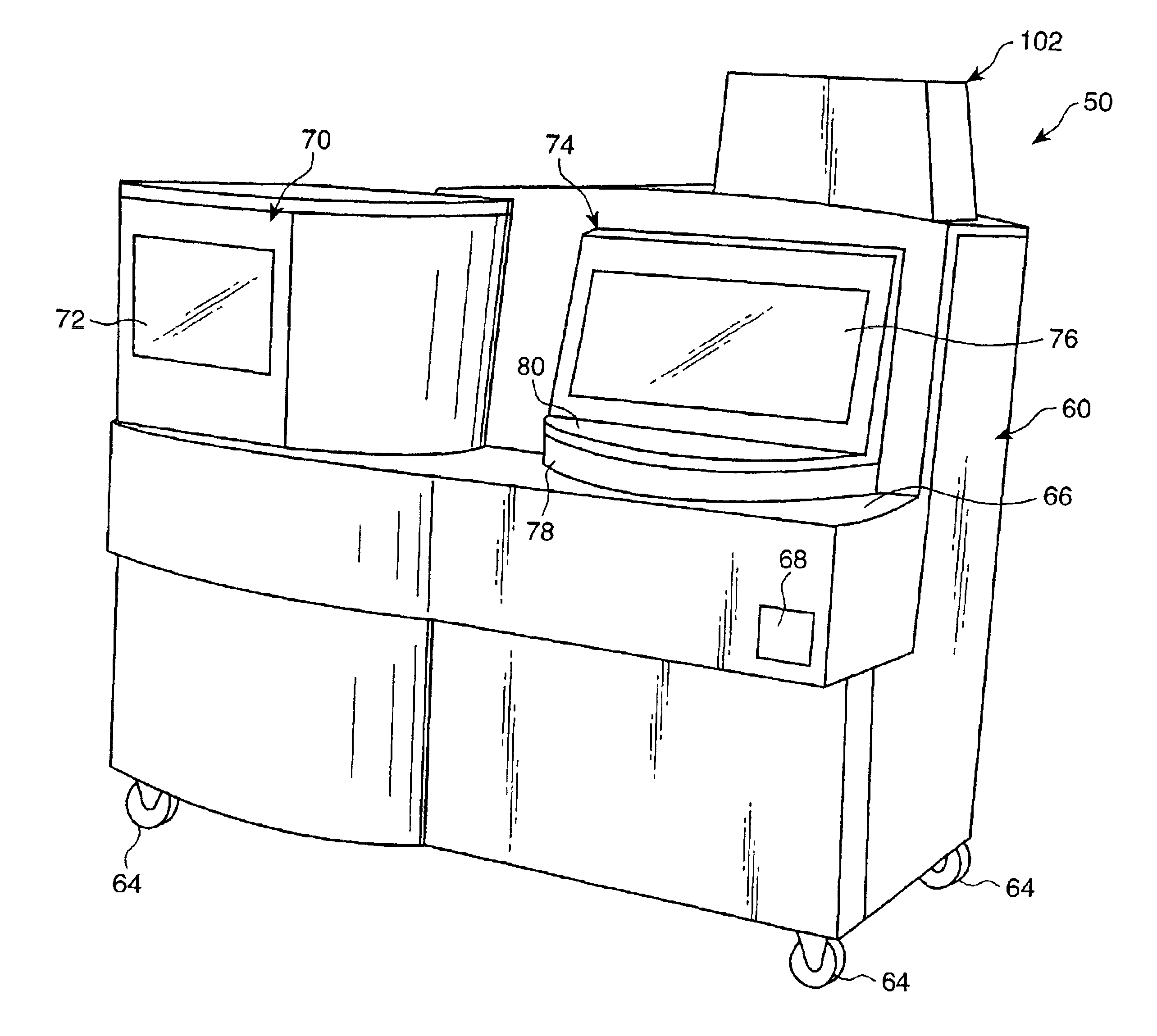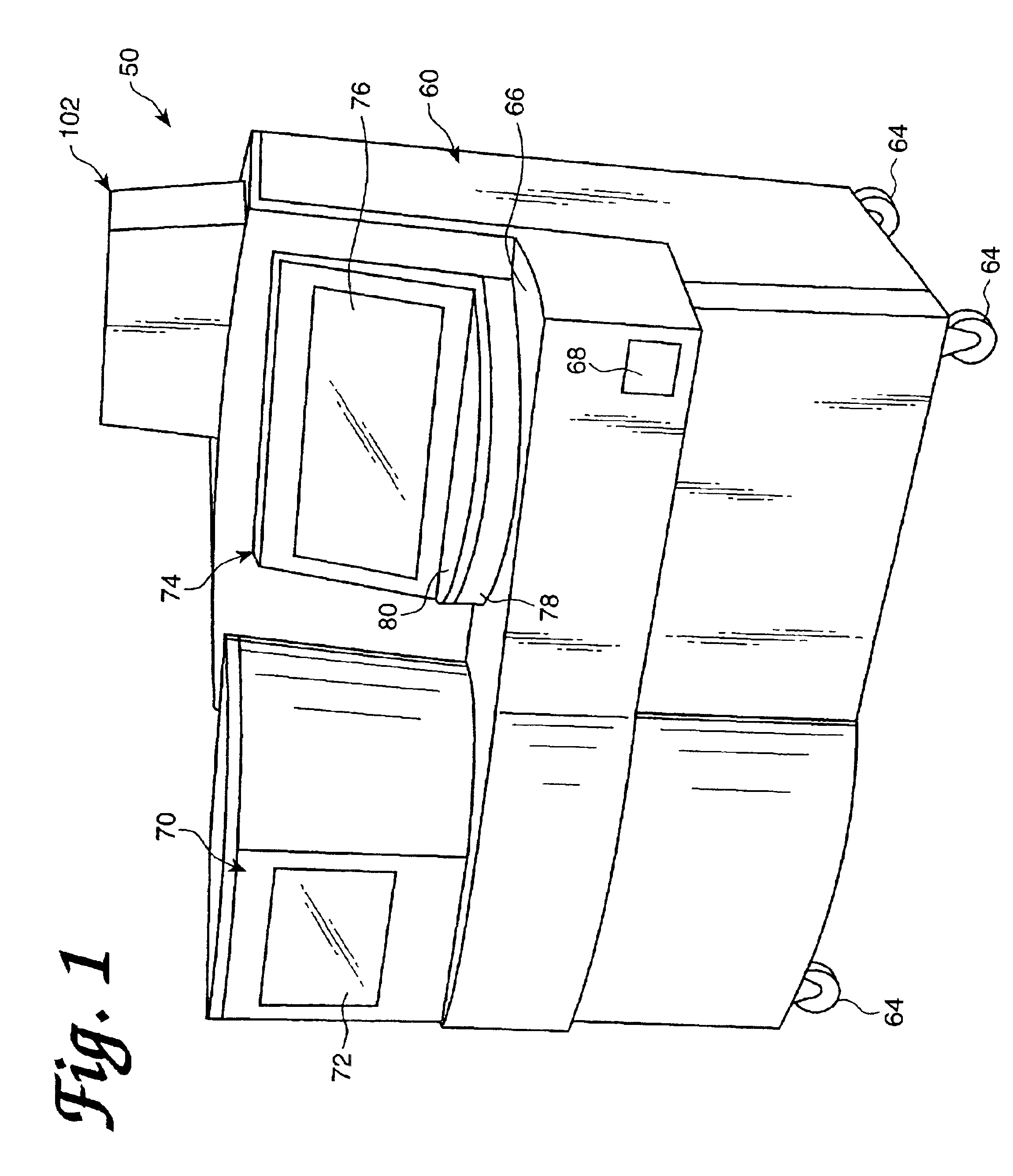Automated process for isolating and amplifying a target nucleic acid sequence
a nucleic acid sequence and automatic process technology, applied in chemical/physical processes, after-treatment of biomass, electrostatic separation, etc., can solve the problems of practitioner error, cross-contamination between assays, and exposure to pathogens, and achieve efficient space utilization, high through-put operation of the analyzer, and the effect of high efficiency
- Summary
- Abstract
- Description
- Claims
- Application Information
AI Technical Summary
Benefits of technology
Problems solved by technology
Method used
Image
Examples
Embodiment Construction
Analyzer Overview
[0093]An automated diagnostic analyzer according to the present invention is designated generally by reference number 50 in FIGS. 1 and 2. Analyzer 50 includes a housing 60 built over an internal frame structure 62, preferably made of steel. The analyzer 50 is preferably supported on caster wheels 64 structurally mounted to the frame structure 62 so as to make the analyzer movable.
[0094]The various stations involved in performing an automated assay and the assay specimens are housed within housing 60. In addition, the various solutions, reagents, and other materials used in performing the assays are preferably stored within the housing 60, as are the waste products generated when assays are performed with the analyzer 50.
[0095]Housing 60 includes a test receptacle loading opening 68, which is shown in FIG. 1 to be disposed in a forwardly facing panel of the housing 60, but could as well be located in other panels of the housing 60. A pipette door 70 having a view wi...
PUM
| Property | Measurement | Unit |
|---|---|---|
| Temperature | aaaaa | aaaaa |
| Time | aaaaa | aaaaa |
| Magnetic field | aaaaa | aaaaa |
Abstract
Description
Claims
Application Information
 Login to View More
Login to View More - R&D
- Intellectual Property
- Life Sciences
- Materials
- Tech Scout
- Unparalleled Data Quality
- Higher Quality Content
- 60% Fewer Hallucinations
Browse by: Latest US Patents, China's latest patents, Technical Efficacy Thesaurus, Application Domain, Technology Topic, Popular Technical Reports.
© 2025 PatSnap. All rights reserved.Legal|Privacy policy|Modern Slavery Act Transparency Statement|Sitemap|About US| Contact US: help@patsnap.com



